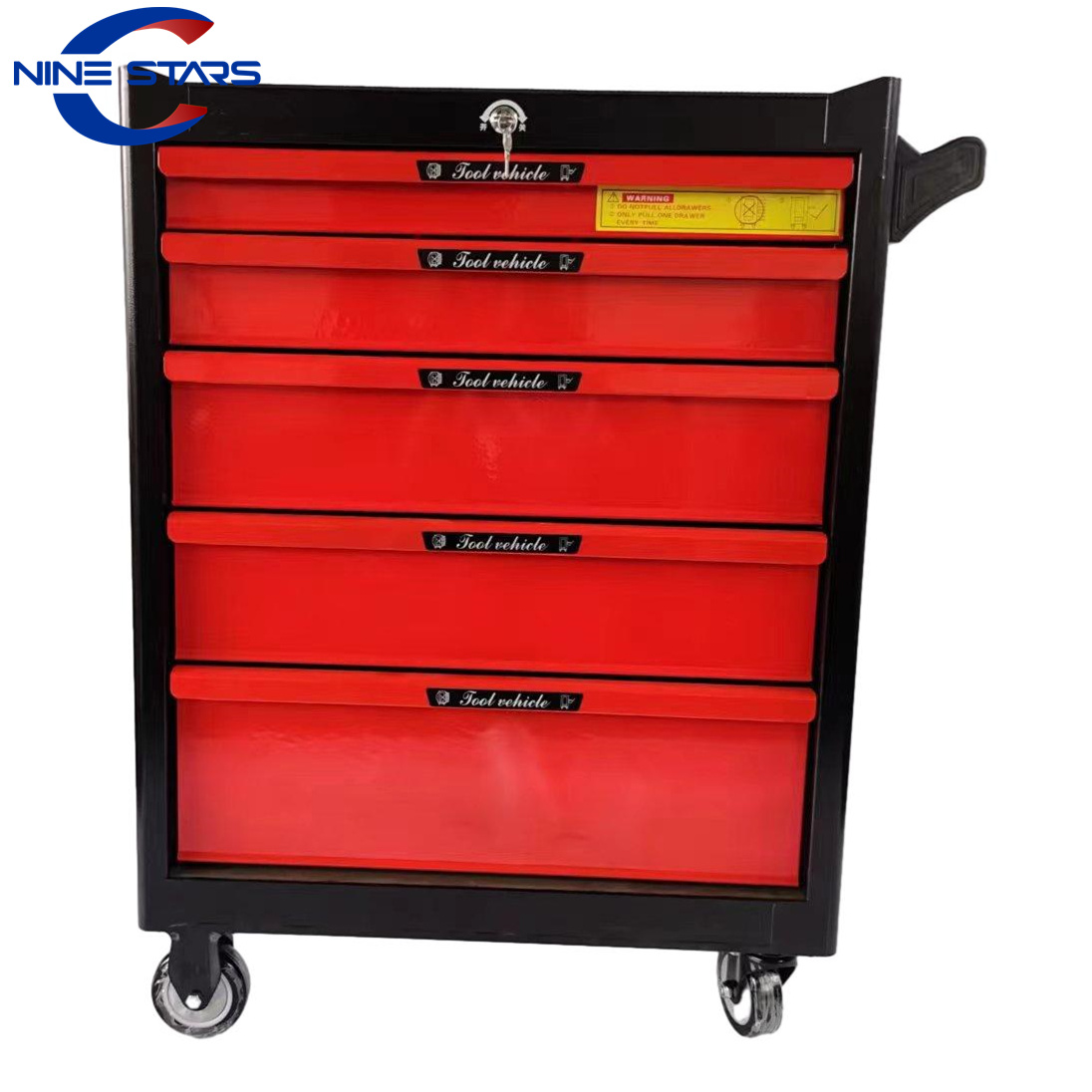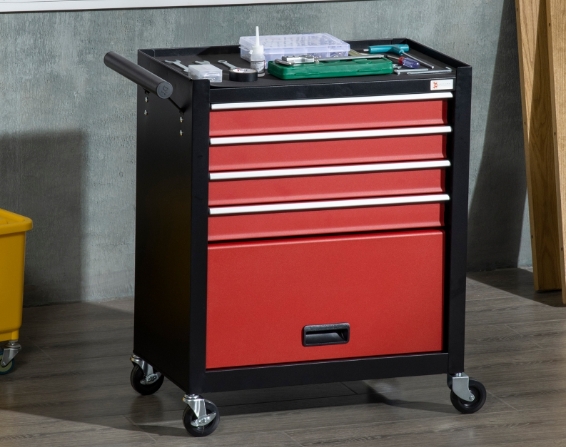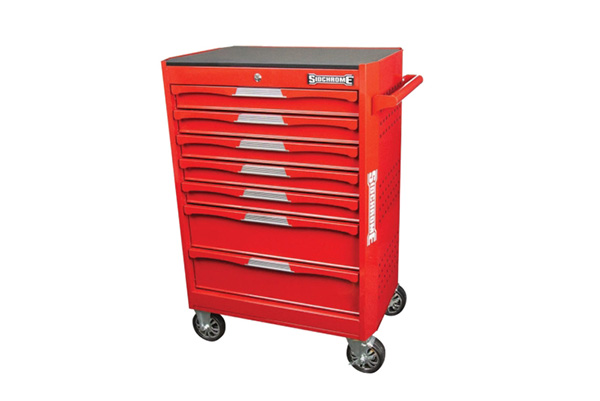Hello, my name is Allen, and for over two decades, I've been at the helm of a manufacturing facility here in China, specializing in high-quality tool storage solutions. With seven production lines, we've had the privilege of exporting our tool boxes, tool trolleys, and tool cabinets to partners across the USA, Europe, and Australia. I've spent countless hours at international exhibitions, speaking with procurement officers just like you—people like Mark Thompson, a sharp, decisive business owner from the USA. I understand your world. You need top-tier quality to satisfy your customers, but at a price point that keeps your business profitable. You're navigating the complexities of international sourcing, and you can't afford miscommunication or delays.
This article is for you. It's a no-nonsense guide from a factory insider, designed to demystify the process of sourcing the best tool storage solutions. We'll break down everything from the difference between a chest and a roller cabinet to the critical importance of steel gauge and drawer mechanics. By the end, you'll be equipped with the knowledge to not only choose the right products but also to partner with the right supplier, ensuring your success in a competitive market.
What Defines a Professional Tool Cabinet Combo?
When we talk about a professional tool cabinet combo, we're moving beyond a simple tool box. A professional setup is an integrated storage system designed for serious efficiency and durability. It typically combines a top chest with a roller cabinet below. The goal is to create a unified, high-capacity workstation that keeps every tool organized and within arm's reach. For a mechanic or a high-volume workshop, this level of organization isn't a luxury; it's essential for productivity.
The "professional" designation comes from specific features. Think heavy-gauge steel construction, high-capacity ball-bearing drawer slides, and robust locking mechanisms. It’s not just about holding tools; it’s about withstanding the daily abuse of an industrial environment. A professional tool cabinet is an investment in workflow. When you source these units, you're not just buying a metal box; you're providing your customers—be they large auto shops or discerning craftsmen—with a reliable centerpiece for their workspace.
How Do You Differentiate a Tool Chest, a Roller Cabinet, and a Combo Set?
Understanding the terminology is the first step to making a smart purchase. Let's break it down simply. Think of them as building blocks for the ultimate tool storage solution.
- Tool Chest (or Top Chest): This is the upper unit. It's designed to sit on a workbench or on top of a roller cabinet. A top chest typically has multiple drawers of various sizes and a hinged top lid that opens to reveal a shallow tray for frequently used items. It's portable to an extent, but it's really the command center of the setup.
- Roller Cabinet: This is the foundation. It's a mobile cabinet on casters, featuring deep, high-capacity drawers for storing larger power tool items and bulky equipment. The roller cabinet provides the mobility for the entire system, allowing a mechanic to move their entire tool collection around the garage or workshop.
- Combo Sets: This is what you get when you put them together. A tool chest stacked securely on a matching roller cabinet creates a combo. These combo sets are the most popular configuration for professional users because they offer a massive amount of organized storage in a relatively small footprint. Some of the most impressive setups are the professional triple bank roller cabinets, which offer three full columns of drawers.

Why is Steel Gauge So Critical for the Durability of Your Cabinet?
I cannot overstate this: the single most important factor in a tool cabinet's longevity is the quality of its steel. Specifically, you need to pay attention to the steel gauge. It's a bit counterintuitive, but with gauge, a lower number means thicker steel. For a heavy-duty tool cabinet meant to last, you should be looking for steel between 16 and 20 gauge. Anything higher (thinner) is more suited for light home use and will dent and warp under industrial stress.
This thicker steel construction provides the rigidity needed to support hundreds, or even thousands, of pounds of tools without buckling. It ensures the frame stays square, so the drawers continue to open and close smoothly. When you're speaking with a potential supplier, don't just ask if it's made of steel; ask for the specific gauge. This one question can tell you a lot about the quality and intended use of their cabinets products. A reliable factory will be transparent about these specifications.
What Should You Look for in High-Capacity Drawer Systems?
A tool cabinet is only as good as its drawers. A beautiful, heavy steel frame is useless if the drawers sag, stick, or fail. The secret to a great drawer system lies in the drawer slides. For any professional application, ball-bearing drawer slides are the only acceptable option. They provide a smooth, frictionless glide, even when the drawer is at its maximum loading capacity. Look for a loading rating of at least 100 lbs (or about 45 kg) per drawer. For deeper drawers intended for heavy tools, 200 lbs is even better.
Beyond the slide mechanism, consider the drawer pulls. Full-width aluminum drawer pulls are not just a cosmetic feature; they provide a sturdy, accessible grip from any angle and add structural rigidity to the drawer front. Also, inquire about the liners. Quality cabinets come with pre-cut, non-slip liners that protect both the tools and the drawers themselves. These details separate a premium tool chest from a budget model and are exactly the kind of features your quality-sensitive customers will notice and appreciate.
Are Larger Roller Cabinets, like a 72″ Model, Always Better for Your Workshop?
The "bigger is better" mindset is a common trap. While a massive 72-inch roller cabinet is impressive, it's not always the right choice. The ideal size depends entirely on the end-user's workshop and needs. A sprawling professional auto-repair garage with multiple bays can certainly benefit from the vast storage of a 72″ or even an 84″ triple bank roller cabinet. These units, like some Extreme Tools DX Series or RX Series models, are designed to be the central hub for a team of mechanics.
However, for a smaller operation, a mobile maintenance provider, or a specialized workshop, a more compact 36″ or 42" roller cabinet might be far more practical. It offers ample storage without dominating the floor space. The key is to offer a range of various sizes. As a procurement officer, your goal should be to build a catalog that can accommodate different needs. Don't just focus on the largest size; a well-chosen selection of high-quality, mid-sized cabinets can often lead to greater sales volume.
"The right tool for the job also applies to the tool's storage. A mismatched cabinet size can hurt workflow just as much as a disorganized one." - A veteran mechanic's wisdom.

How Can a Hutch and Side Lockers Transform a Standard Tool Cabinet?
A hutch is what elevates a simple roller cabinet into a true workspace. A tool cabinet with hutch adds a vertical storage space above the main work surface. This area is perfect for keeping diagnostic equipment, laptops, and manuals safe and visible. Many hutches come with a built-in power strip, turning the tool cabinet into a convenient charging station. They often feature a pegboard back wall for hanging frequently used hand tools and a locking door for added security.
To expand even further, you can add a side cabinet or side locker. A side cabinet typically offers more drawers, while a locker provides tall, open storage with adjustable shelves, perfect for storing bulky items or personal effects. A complete system—a roller cabinet with a hutch and 2 side lockers—creates an all-in-one, fully enclosed, and secure workstation. It's the ultimate storage solution that allows a user to organize their entire tools and equipment collection in one place.
What Are the Key Differences Between Elite and Standard Series Cabinets?
When you browse a manufacturer's catalog, you'll often see different series, such as a standard line and a premium or elite line. As someone who isn't a technical expert, understanding the difference is key to smart purchasing. Here's a simple breakdown based on what we see in the industry:
| Feature | Standard Series (e.g., DX Series) | Elite Series (e.g., RX Series) |
|---|---|---|
| Steel Gauge | Good (e.g., 18-20 gauge) | Better (e.g., 16-18 gauge) |
| Drawer Slides | Heavy Duty (e.g., 100 lb capacity) | Extreme Heavy Duty (e.g., 150-200 lb capacity) |
| Casters | Standard Duty (e.g., 4" or 5") | Professional Grade (e.g., 6" spring-loaded) |
| Work Surface | Often an add-on or basic mat | Included, often stainless steel or wood |
| Locking System | Standard tubular lock | More robust, sometimes with multiple locking points |
| Finish | Standard powder coat | High-gloss, scratch-resistant AkzoNobel powder coat |
The elite series, like a Series 72 pro model, is built for the most demanding environments and users who see their tool storage as a long-term investment. The standard series offers excellent value and durability for most professional and semi-pro applications. Your job is to understand your customer base and stock the right mix. Many hardware retailers find great success offering a primary "good" option and a premium "better" option.
Navigating Sourcing: What Certifications and Quality Checks Are Non-Negotiable?
This is where trust becomes paramount. As a buyer like Mark, your biggest fears are legitimate: receiving a container of low-quality products or dealing with fraudulent certifications. From my perspective as a factory owner, here’s how to protect yourself. First, a reputable manufacturer is proud of their quality control. Ask for a detailed report of their internal quality inspection process. We, for example, have checkpoints at every stage, from raw steel intake to final assembly and packaging.
Second, ask for certifications, but don't stop there. Verify them. Standards like ISO 9001 (for quality management) are important. For products with electrical components, like a hutch with a power strip, certifications like CE (for Europe) or UL (for the US) are non-negotiable for safety and compliance. A common pain point is a supplier faking these. A trustworthy partner will have no problem providing you with the certificate number and the issuing body's contact information so you can verify it yourself. This simple step can save you from major headaches and potential liability. This is a cornerstone of how we build long-term partnerships—with complete transparency.

Beyond the Product: How Do You Ensure Smooth Logistics and Communication?
You can source the world's best tool cabinet, but if it's delayed for two months, you've missed your sales window. This is a critical pain point I've heard about for years. Inefficient communication and logistics can cripple a business. The key is to partner with a supplier who views logistics not as an afterthought, but as part of the product. Ask potential suppliers about their communication protocols. Do you get a dedicated sales representative who speaks fluent English? How often will you receive production and shipping updates?
At our factory, we assign a dedicated account manager to each B2B client. They are your single point of contact, responsible for providing weekly updates with photos and progress reports. We also work with established, reliable freight forwarders to minimize the risk of delays. Before signing a contract, discuss Incoterms (shipping terms like FOB or CIF) clearly. A good partner will walk you through the options and help you choose the one that best suits your business model and mitigates your risk. Clear, proactive communication is the antidote to shipment delays.
What Are the Essential Accessories for a Mechanic's Toolbox Combo?
A tool cabinet is the house; the tools and accessories are the furniture that makes it a home. Offering a range of useful accessories can be a fantastic way to increase the value of each sale. When you sell a 5-drawer tool cabinet, you should also be thinking about what the customer will put inside it.
Here are some of the most popular accessories for mechanics:
- Socket Organizers: Trays and peg-style organizers that keep every socket, from a tiny 1/4" to a large 1/2" drive, in its proper place.
- Wrench Racks: Simple plastic or metal racks that store a full set of combination wrenches vertically or horizontally, saving immense drawer space.
- Screwdriver Holders: Racks that mount to the side of a cabinet or a pegboard hutch, keeping screwdrivers and pliers easily accessible.
- Side Shelves: A small folding shelf that can be attached to the side of a roller cabinet to create a temporary work surface for small tasks.
- Tool Kits: Of course, the most important accessory is a comprehensive set of tools. Offering a complete 218-piece mechanic's tool set as a package deal with a tool chest is a powerful sales strategy.
Offering these accessories not only enhances the functionality of the main toolbox but also positions you as a one-stop-shop for all your customer's storage and tool needs. You can even source a simple economical tool trolley as a lighter, mobile alternative for specific tasks. Or, for those needing basic portable storage, a classic stainless steel tool box is always a strong seller.
Key Takeaways for Sourcing Success
Navigating the world of tool storage sourcing can be complex, but by focusing on the right details, you can build a profitable and reputable business. I hope my perspective as a manufacturer has been helpful. Remember these key points:
- Know the Lingo: Understand the difference between a tool chest, a roller cabinet, and a combo to meet diverse customer needs.
- Quality is in the Steel: Always ask for the steel gauge. A lower number means thicker, more durable steel and a longer-lasting product.
- Drawers Make the Difference: Insist on ball-bearing slides with a high loading capacity (100+ lbs) for smooth, reliable operation.
- Think Modular: A hutch and side lockers can transform a basic cabinet into a complete, high-value workstation.
- Verify Everything: Don't just ask for certifications; verify them with the issuing body to protect yourself from fraud.
- Communication is Key: Partner with suppliers who prioritize clear, proactive communication to avoid costly logistics nightmares.
- Offer the Whole Solution: Sell not just the cabinet, but also the accessories and tool sets that make it truly useful for your customers.
By arming yourself with this knowledge, you can approach your next sourcing trip or Google search with the confidence of an industry pro. You can ask the right questions, identify genuine quality, and build lasting partnerships that will be the foundation of your success.
Post time: 06-17-2025



